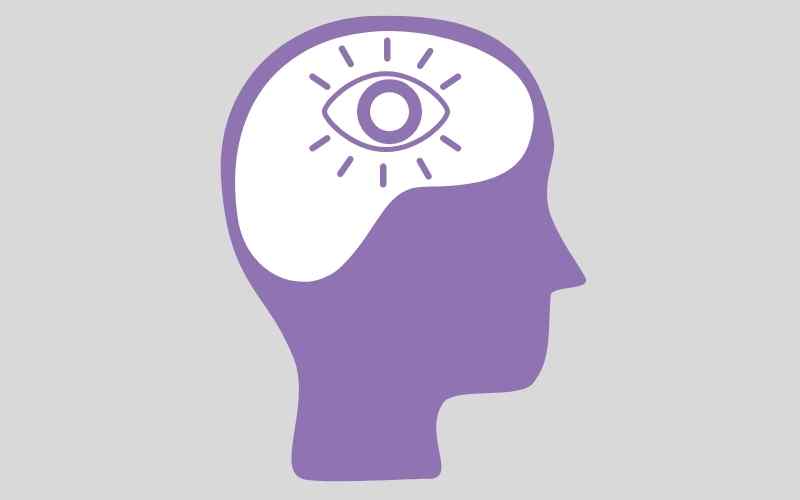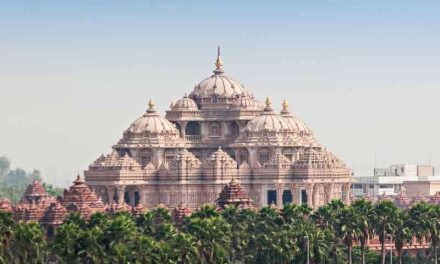Jnana yoga is the yoga of knowledge — not abstract understanding — but Brahman and Atman understanding and the awareness of their unity. Where God’s devotee follows the commands of the head, the jnani makes use of the mind’s forces to distinguish between the true and the imaginary, the eternal and the transitory.
Jnanis, adherents of the nondualistic or Advaita Vedanta, can also be called monists since they accept Brahman’s sole truth. Naturally, all Vedanta adherents are monists: all Vedantins accept Brahman’s sole truth.
In the theological activity, the difference here is: although all Vedantins are philosophically monistic, in reality, those who are devotees of God tend to think of God as distinct from themselves in order to experience the sweetness of a connection.
Jnanis, by comparison, recognizes that indifference is pure duality. There’s no reason to search for divinity outside of ourselves: we really are spiritual ourselves. Why is it that stops us from understanding our true self and the universe around us? Maya’s Cover. Jnana yoga is the method of making the veil completely, breaking it through a two-pronged technique.
In Jnana Yoga, the mind is employed as a vehicle for transcending this world, but at the same time, the mind itself builds boundaries and the illusion of separation from the Self in order to achieve this goal. So, if we want to “achieve” the correct information, we must first deal with our own thoughts and feelings.
The unclean and dispersed minds are the two issues that we are dealing with in this situation. The disturbance is brought on by the impurities of the mind, as well as scatteredness, and as a result, we are unable to focus and rest the mind, much alone utilizing it as an instrument for transcendence.
Jnana Yoga is the way of Yoga that is primarily concerned with the mind, and as a result, it is primarily concerned with man’s intellect. Jnana Yogis believe that knowledge and intellect are equally vital, and they strive to unite the two in order to transcend constraints.
They are open to diverse philosophies and religions because they seek to gather information, and they feel that an open and reasonable mind is essential in order to understand the spirit of things.
Jnana Yoga is a kind of practical philosophy/metaphysics that is taught in a practical manner. It is both a theoretical and a practical endeavor. As a technique for understanding our ultimate Self, Jnana Yoga employs the intellect to help us see that it exists behind and beyond our mind.
It is a Quest for the Self that involves direct investigation into the question of “who we are.” It is, however, erroneous to believe that the Source can be discovered just via intellectual inquiry.
Everything in yoga, at its core, returns us back to our actual nature, which is to recognize ourselves as ultimate beings of consciousness, or the Atma (Soul). There are many different yoga pathways open to everyone, depending on how you want to return to your oneness with the universe.
Recognize that you are not your conscious mind and that you are pure awareness that is not confined by the constraints of the mind. As you shift your life into a state of meditation, the practice of living with awareness becomes yoga.
Learn the significance of Jnana yoga and how to practice it. In Jnana yoga, a state of unity is achieved by knowledge and wisdom. To be really united with the Divine, we must be so preoccupied with Jyana, or knowledge.
That our connection with the Divine is passionately filled with a desire to discover the truth. We must devote so much time to reading scriptures, novels, and philosophy that we will eventually have the knowledge and understanding necessary to recognize the truth.
But this can only be accomplished via the practice of yoga or by union with the Divine – only then is it considered Jnana yoga. We practice it by first establishing a spiritual unity with the Divine, which may be accomplished by Bhakti (devotion), Dhyana (meditation), or Karma (service) (action). We read and listen, and we employ an approach that might help us grow or add to our knowledge and wisdom after we have arrived at our destination of yoga.
Jnana Yoga is classified into the following categories:
- The information gained via the use of the five senses, such as that gained in school, is referred to as Mati-Jnana.
- The knowledge-based on the interpretation of signals, the comprehension of voice, words, writings, gestures, and so on is known as Sruta Jnana.
- The third kind of clairvoyance is Avadhi Jnana, which is the transcendental awareness of corporeal objects that occurs without the use of organs.
- Extrasensory perception, also known as transcendental knowledge of others’ thoughts. Which occurs when one does not use one’s senses or one’s organs to perceive or know what others are thinking. This is refered to as Manahparyaya Jnana.
- Kevala Jnana – Omniscience that is limitless, absolute, and direct, as well as the ideal and ultimate type of knowledge and perception.
A self manifested universe
The first element of the method is pessimistic, the not this process, not this, not that. Everything that is impossible is rejected that is, impermanent, incomplete, subject to alter. The second element is positive: in the highest context, everything which is considered to be good, everlasting, unchanging is acknowledged as true.
Do we think the world we experience is unreal? Yes and no. That is impossible in the utter context. The world and our understanding of it have but one conditional truth, not one absolute fact.
To go back to our earlier connection to the rope and the serpent: the cord, that is, Brahman, is interpreted as the worm, that is, the world as we view it. Although we see the snake as a snake, it does have a conditional truth. Our hearts are palpitating as we react to our vision. When we see the “snake” we chuckle at our illusion for what it is.
Similarly, the basic existence of our bodies and minds inevitably limits everything we draw in by our senses, our brains, our intellects. Brahman is infinite; there is no end to it. And this world of change of space, time, and causation cannot be the Brahman limitless, all-pervading.
Our minds are circumscribed by any imaginable condition; Brahman’s limitless fullness can not be whatever the mind and the intellect comprehend. Brahman will go beyond what the human mind would understand; as the Upanishads claim, Brahman is “beyond the comprehension of expression and mind.”
However, what we experience can not be anything other than Brahman. Brahman is timeless, omnipresent, and immortal. There can’t be two infinities; what we see can only be Brahman at all times; every restriction is only our own misperception. Jnanis aggressively eradicate this misperception by the destructive mechanism of distinction between the true and the imaginary, and by Self-affirmation’s constructive method.
Affirming to be the self
In Self-affirmation we continually reinforce what is true about ourselves: we are not restricted to a tiny physical body; our individual minds do not restrict us. We are free, true, beautiful, and everlasting. This is our being’s greatest Reality.
The theory behind Self-affirmation is simple: then you are what you believe. For thousands of lifetimes, we have conditioned ourselves to think of ourselves as small, puny, frail, and powerless. What an awful, horrific lie this is and how unbelievably self-destructive it is! It’s the worst imaginable toxin we might eat.
If we think that we are poor, then we will behave accordingly. If we think of ourselves as powerless victims, we must behave appropriately, without any hesitation. If we think of ourselves as Spirit pure, good, free we will behave accordingly too.
As we have drummed the wrong thoughts through our heads over and over again to build the wrong ideas, then we have to reverse the cycle by drumming correct thoughts through our brains purity thoughts, power thoughts, thoughts of reality. As the classic Advaita document, the Ashtavakra Samhita declares: “I am spotless, cool, pure consciousness and beyond that. All this time I have been duped by delusion.
“Jnana yoga uses our tremendous mental forces to stop the duping cycle, to realize that we are free, good, eternal, and everlasting even now — and have always been so. Realizing this, we would always consider the same divinity, the same pureness, and purity in some. We’ll see the one Brahman everywhere and in all, no longer limited to the debilitating limits of “I” and “mine.”






Jai shree Ram!
Thank You…Ram Ram Ram